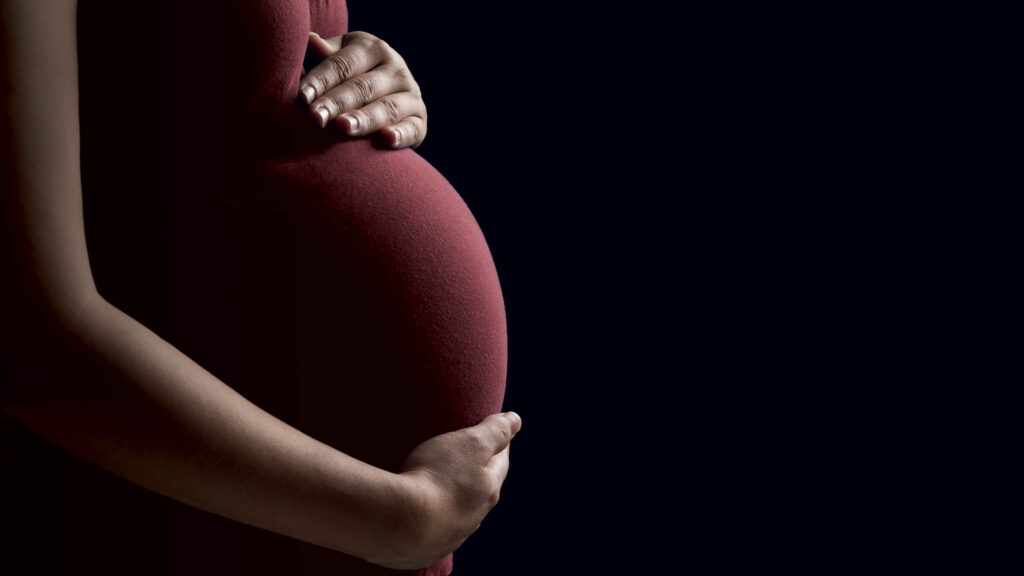Pregnancy is a transformative physiological state, characterized by the development of a fetus within the uterus, beginning with conception and culminating in childbirth. Spanning approximately 40 weeks, it is traditionally divided into three trimesters, each marked by significant changes in maternal physiology and fetal development. Understanding these stages is critical for ensuring optimal maternal and fetal outcomes.

Signs and Symptoms of Early Pregnancy
The earliest signs of pregnancy may vary, but common indicators include:
- Missed menstrual period (often the first noticeable sign)
- Nausea and vomiting (morning sickness)
- Breast tenderness and swelling
- Frequent urination
- Fatigue and dizziness
- Food aversions or cravings
- Mood swings and emotional changes
- Mild cramping and spotting (implantation bleeding)
A positive result from a home pregnancy test, followed by a blood test or ultrasound confirmation, is standard for accurate diagnosis.
The Three Trimesters of Pregnancy
First Trimester (Weeks 1–12)
- Fertilization and implantation occur within the first week.
- The placenta begins forming, and hormonal changes support early development.
- Organs such as the heart, brain, and spinal cord start developing.
- Common symptoms: morning sickness, fatigue, mood swings.
Key risks in this stage include miscarriage and ectopic pregnancy, emphasizing the need for early prenatal care.
Second Trimester (Weeks 13–26)
- Known as the “golden period” due to reduced nausea and increased energy.
- Fetal heartbeat is detectable via Doppler ultrasound.
- The fetus develops bones, facial features, and genitals.
- The mother’s abdomen expands, and movement (“quickening”) is often felt.
Routine anomaly scans and blood tests are performed to assess fetal health and growth.
Third Trimester (Weeks 27–40)
- Rapid fetal weight gain and organ maturation occur.
- Increased pressure on maternal organs may cause back pain, swelling, and shortness of breath.
- The fetus moves into the head-down position in preparation for delivery.
- Final preparations for labor and childbirth begin.
Fetal Development Week-by-Week
- Week 4: Heart begins to beat
- Week 8: Limbs form; neural pathways develop
- Week 12: All major organs present
- Week 20: Baby can hear; kicks may be felt
- Week 28: Eyes open and close; sleep-wake cycles form
- Week 36–40: Lungs mature; weight gain completes
A well-documented growth chart and ultrasound schedule ensures fetal development is monitored consistently.
Nutrition and Lifestyle During Pregnancy
Maintaining a balanced diet and healthy lifestyle is paramount.
Essential Nutrients
- Folic Acid: Prevents neural tube defects
- Iron: Supports increased blood volume
- Calcium: Builds fetal bones and teeth
- DHA and Omega-3 Fatty Acids: Aid brain development
- Protein: Vital for tissue growth
Foods to Avoid
- Raw or undercooked meats and seafood
- Unpasteurized dairy products
- Excess caffeine
- Alcohol and tobacco
- High-mercury fish (e.g., swordfish)
Exercise and Activity
Moderate physical activity such as walking, prenatal yoga, and swimming is encouraged unless contraindicated. Regular movement promotes circulation, reduces stress, and supports healthy weight gain.
Prenatal Care and Medical Monitoring
Routine prenatal visits are essential:
- Monthly during the first 28 weeks
- Biweekly from weeks 28 to 36
- Weekly from week 36 until delivery
Monitoring includes:
- Blood pressure, weight, and urine checks
- Screening for gestational diabetes and anemia
- Ultrasounds and fetal heartbeat monitoring
- Vaccinations (e.g., Tdap, flu vaccine)
Common Pregnancy Complications
Gestational Diabetes
A temporary form of diabetes due to insulin resistance. Managed with diet, exercise, and insulin therapy if needed.
Preeclampsia
Marked by high blood pressure, proteinuria, and organ dysfunction, preeclampsia requires prompt medical attention to prevent complications.
Preterm Labor
Labor occurring before 37 weeks. Causes may include infection, cervical insufficiency, or multiple pregnancies.
Miscarriage and Stillbirth
Miscarriage typically occurs in the first trimester, while stillbirth is defined as fetal death after 20 weeks. Both require emotional and physical care.
Labor and Delivery: What to Expect
Stages of Labor
- Early and Active Labor: Cervix dilates from 0–10 cm
- Delivery: Baby moves through the birth canal
- Placenta Delivery: Follows within 30 minutes post-birth
Delivery Methods
- Vaginal delivery: Preferred and most common
- Cesarean section (C-section): Surgical alternative in complicated births
- Assisted delivery: Involves forceps or vacuum extraction if necessary
Pain relief options include epidural anesthesia, IV medications, and natural methods like breathing techniques and hydrotherapy.
Postpartum Recovery
The postpartum period, or “fourth trimester,” spans six weeks post-delivery. Key aspects of recovery:
- Uterine involution and vaginal discharge
- Breastfeeding challenges and lactation support
- Mood fluctuations including postpartum depression
- Sleep deprivation and physical fatigue
A postpartum check-up ensures physical and emotional recovery progresses appropriately.
FAQs:
How early can pregnancy symptoms start?
Some symptoms appear within a week of conception, though most women notice signs after a missed period.
Can I travel during pregnancy?
Travel is safe in most low-risk pregnancies until around 36 weeks, with proper precautions and hydration.
When should I contact a doctor immediately?
Severe abdominal pain, heavy bleeding, sudden swelling, or blurred vision require urgent evaluation.
Is it normal to feel anxious during pregnancy?
Yes, emotional changes are common. Support from family, counseling, or prenatal classes can help manage anxiety.
What supplements should be taken?
Prenatal vitamins with folic acid, iron, calcium, and DHA are commonly recommended.
Pregnancy is a multifaceted journey encompassing profound physical, hormonal, and emotional transformations. With proper care, nutrition, and medical guidance, the journey can be both safe and empowering. Recognizing symptoms early, adhering to prenatal checkups, and preparing for labor and recovery are key pillars in ensuring the well-being of both mother and baby.